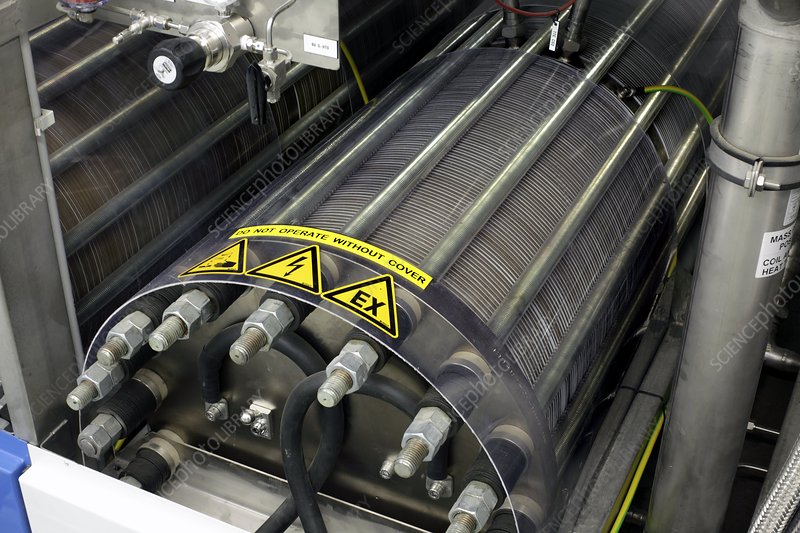Hydrogen has been identified as one of the sources that could facilitate the decarbonisation due to its ability to store and supply large quantities of energy without creating CO2 emissions during combustion. In particular, hydrogen can play a decisive role in the decarbonisation of energy-intensive industries, including the air and maritime transport sectors as well as the steel and chemicals industries. Some experts see hydrogen as destined to represent a large share of the global energy mix of the future, while others are more cautious. What is certain, however, is that the growing use of this energy vector will have profound geopolitical implications across the world, with the potential of re-drawing the energy, economic, social and security relations maps.
The global clean energy transition would result in a new geopolitical map. As new cleaner energy sources are deployed, old players such as oil producing countries could see their geopolitical influence shrink, while new players will emerge. In this sense, the Mediterranean may become one of the main hotspots for the hydrogen economy due to the complementary nature between the EU’s green and technological ambitions and the great natural resource potential across the Middle East and North Africa (MENA). The EU expresses one of the strongest political commitments to lead in hydrogen, as it considers it a key element in its pursuit of climate neutrality by 2050 and, at the same time, a sector to enhance its technological leadership in, carried by its painful experience in solar PV manufacturing, which was developed in Europe at high costs only to be eventually moved to China. In July 2020, the EU launched its Hydrogen Strategy, which envisages hydrogen covering 13-14% of Europe’s energy mix by 2050.
If the Green Deal will make the EU less reliant on fossil fuels imports, it will not eliminate its energy interdependence to meet its climate targets. Indeed, EU countries may not be able to produce all their renewable energy domestically due to the continent’s limited size and high population density. Thus, it may need to turn to hydrogen imports from other regions. The MENA region is potentially well positioned to seize this opportunity. It could produce and export both green and blue hydrogen at a competitive cost, given its great potential in renewable – particularly solar – as well as its large natural gas reserves and CCS potential. Regarding green hydrogen, MENA countries could produce cheap electricity, which is the key factor in the production of green hydrogen, due to their optimal renewable potential. It should be noted here that the idea to import clean energy from the southern shore of the Mediterranean is not new in Europe. It was initially launched back in 2009 under the Desertec project and hydrogen is just adding new momentum to the idea.
Hydrogen represents an opportunity for MENA countries to renovate their geopolitical influence in the low-carbon future. To that end, both oil-rich and oil-poor MENA countries have increasingly been working on their hydrogen ambitions, considering both blue and green hydrogen projects. Among them, four countries in particular have announced major hydrogen plans: three of them are oil exporters in the Gulf (Saudi Arabia, the UAE, and Oman) and one is a net importer in North Africa (Morocco). While Morocco does not hold significant hydrocarbon reserves, it is commonly seen as the leading hydrogen player in North Africa. It set an ambitious renewable target of 52% of installed electricity capacity – corresponding to around 11 GW – by 2030. The aim is to use its great solar and wind potential in order to develop hydrogen. Morocco strongly supports the development of renewables and hydrogen as potential ways to decarbonize its energy mix, lessen its high import dependency, and emerge as a powerful player in the clean energy arena. Morocco plans to devote two-thirds of its green hydrogen to exports. In June 2020, Germany signed a memorandum of understanding with Morocco for the development of the hydrogen projects.
The MENA countries may target different export markets and products solutions. North African countries may direct their hydrogen exports mostly to Europe due to their vicinity and existing infrastructure. However, the European preference for green hydrogen may discourage blue hydrogen exporters. Lastly, oil-producing countries in the MENA region are looking for new sources of revenue for their socioeconomic model. However, exporting hydrogen may not produce enough revenues for governments. For such reasons, these countries might decide to use renewable energy and hydrogen domestically for the production and export of intermediate and final carbon-intensive products, thereby creating more value. Nevertheless, the MENA countries’ hydrogen ambitions may also encounter some challenges, including water scarcity, limited renewable capacity, economic restrictions.
In conclusion, hydrogen is an opportunity for both shores of the Mediterranean which might drive them even closer. The EU could enlarge its climate diplomacy in a key region whilst satisfying its needs for clean energy required to reach carbon neutrality. For their part, MENA countries could seize this opportunity to position themselves in the new geopolitical map and find alternative revenue sources for their socioeconomic model. However, in order to do so, they will need to address environmental, energy and economic challenges.




